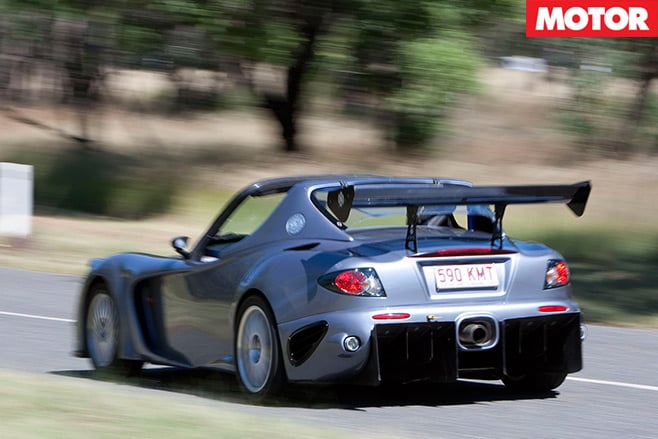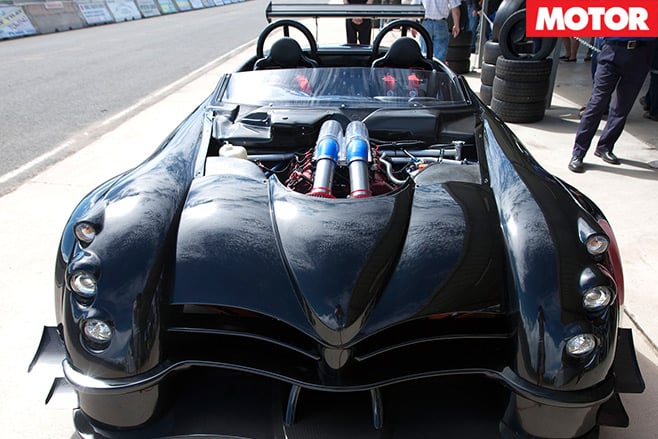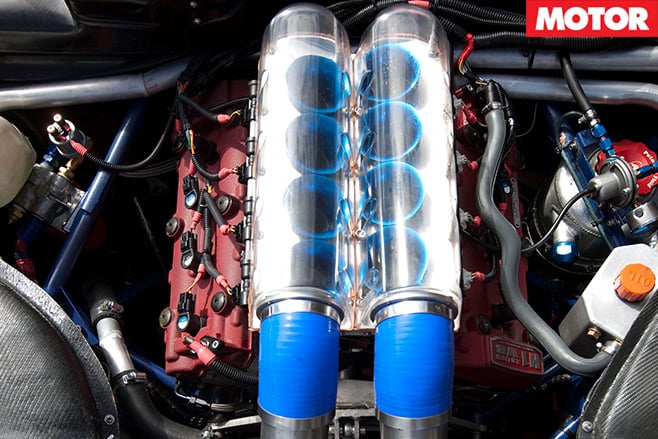Motoring journos tend to be suspicious types, and for good reason. Too often, the cheapo econoboxes, people-movers and dribblers of the Australian motoring marketplace are described as ‘sporty’, ‘stylish’ and ‘dynamic’. In reality, this can be wildly inaccurate, but unfortunately, there’s no law that says car companies must stay within the boundaries of objective truth.
So it’s refreshing – disconcerting, even – to stumble across a car maker whose vehicles do exactly what the tin says. I’m standing among a keen band of customers at Queensland’s Morgan Park Raceway for the launch of Skelta’s 2009 range of sports cars. And even after a cursory glance, the most cynical scribe would have to admit that there’s no arguing with its claim of “pure performance, no compromise”.
Pleasingly, the whole reason for the G-Force SC’s existence is to out-perform just about any production car you care to name. You see, Skelta’s founder, Ray Vandersee, wants victory in Targa Tasmania. Really, really badly. After winning the 1977 Queensland Rally Championship in his Torana XU-1, Vandersee was soon forced on a 15-year hiatus from motorsport, due to a lack of finances. However, he returned hungrier than ever and entered his own Lotus 7 Clubman prototype in the 1999 Targa Tasmania. Over the next few years, he developed it to a point where he was regularly competing with Porsche GT2s and Nissan GT-Rs.

This year, three Skelta G-Force Mk II SCs challenged for victory: one driven by Vandersee, the other pair by customers. In the SC, the same Honda FC20 S2000 is mated it to a Rotrex supercharger, lifting peak power to 230kW at 8500rpm. With only 725kg to haul, the G-Force SC boasts a terrifying power-to-weight figure of 317kW/tonne. That’s an extra 126kW/tonne over the Lotus Exige S PP and 65kW/tonne more than the track-only Lotus 2-Eleven. Sure, the G-Force SC costs a mighty $160,000, but it also has ADR compliance, so it can be road-registered.

Performance, then, isn’t a problem. But with all this firepower, you’d expect this wayward beast to fling you at the scenery the moment you turned the key, wouldn’t you? “As a driver, you want predictability in your handling,” says Vandersee. “You don’t want to be going into a corner, finding you’re going a little too fast, back off, and suddenly find yourself spinning.” This is where the Skelta’s dubious styling comes into play.
By any measure, the G-Force is an ugly car. The centre nose has receded into the bonnet in the Mark II, but the bulky front tusks either side of the front splitter remain. From a side-profile view, the 17-inch front and 18-inch rear wheels look puny, dwarfed by the various lumps that make up the rear bulkhead. And as for the rear – well, you be the judge. But there’s a reason for the car’s awkward appearance, and it’s all down to aerodynamics. Remember: pure performance, no compromise.

Eager to experience what all this grip feels like, I’m invited to climb into the G-Force and experience it first-hand. Luckily, our car only has a half roll-cage installed for easy entry. Lowering myself into the G-Force, I’m surprised by my surrounds. A Lotus Elise seems like a limousine in comparison – there’s absolutely nothing but the essentials. Air-con? Um, there’s not even a heater…

It’s impossible to forget that figure as the starter whirls and the engine fires. I recognise the flouro green digital dash as another lift from the Honda S2000, and prepare to move off. The racing clutch’s take-up is sudden, but it’s reasonably easy to modulate and, thankfully, I roll away in front of the attending crowd without kangarooing or stalling. I gently brake before I leave pitlane and even with my helmet on, I cringe at the piercing screech as cool brake pads clamp on even colder discs. But I quickly forget about it as soon as I power out onto the racetrack and snick easily though the short-throw S2000 gearbox. Before I know it, I’m approaching a blind sweeper I’ve never driven through before, far too fast. I gently squeeze the brakes and turn-in as softly as I can, not wanting the rear-end to break loose – there’s an uninviting concrete wall on outside of the corner. The Skelta laughs at me … it’s not even trying.

“To win Targa Tasmania would give me a great deal of self-satisfaction,” says Vandersee. “Really, the last guy to have tasted international success in his own car was Sir Jack Brabham. We’re certainly not claiming the same level of success, but Sir Jack’s definitely been an inspiration.”
By the time you read this, the event will be over, and the results will show if Vandersee’s latest bid has been successful. No doubt, he’ll go close. After all, a Skelta is all about pure performance, no compromise.





